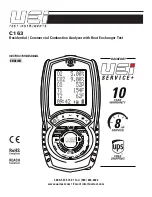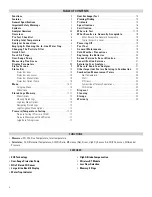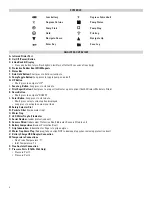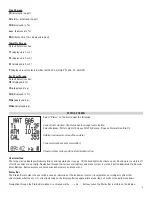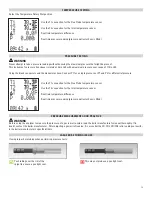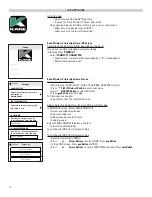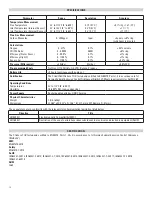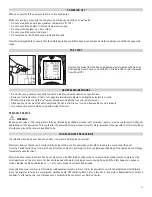
14
In Heat Exch Setup Screen, select Fuel type (Natural Gas, Bio Oil, Heavy Oil, Pellets, Light Oil, LPG,
Butane, Propane)
HEAT EXCHANGER TEST
NOTE:
Test results; O2, CO and Excess Air will show on the printout.
There are many methods to test heat exchanger integrity. One of these is to observe the Excess Air, O2 and CO readings both before
and after the blower turns on. If the heat exchanger is sealed your O2 and CO readings should remain fairly stable. A breach in the heat
exchanger may allow fresh air to be forced into the flue after the blower turns on due to a pressure increase in the plenum. The result
may be a rise in the measured O2 in the stack gas and an increase in the Excess Air . In some sealed systems the fresh air drawn in
through the breach may reduce the combustion air available leading to an increase in the CO reading. If either of these situations are
present it is probable that there is a problem with the Heat Exchanger which may require additional testing and inspection.
NOTE:
Many cracks are invisible to borescopes or the naked eye, and only open or separate from pressure or temperature changes
during operations.
Select the Exch Test rotary dial position. Call for heat on the system. Observe and wait for O2 readings to stabilize.
Press
for Exchange
Press
for Run
Press
for Start
VIEWING/PRINTING
Press PRINT
BUTTON to print a full Temperature or Pressure Log. (printing is to either the IRP-2, the KMIRP or APP)
In Blower Off mode,
In Blower ON mode,
Test results will appear
Press
or
to select
Press
to start test
it will count down
on screen Press
Run, View or Delete all
from 60 seconds
Press
to select
Summary of Contents for C163KIT
Page 25: ......

